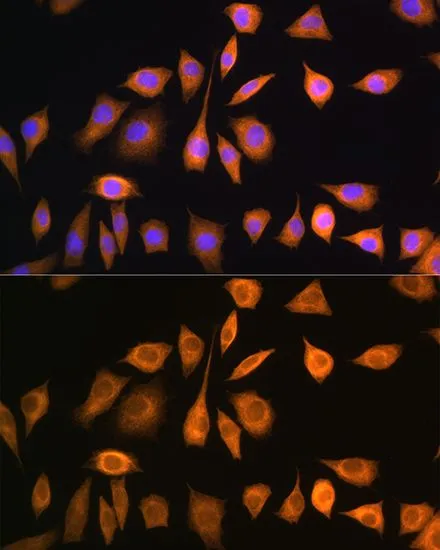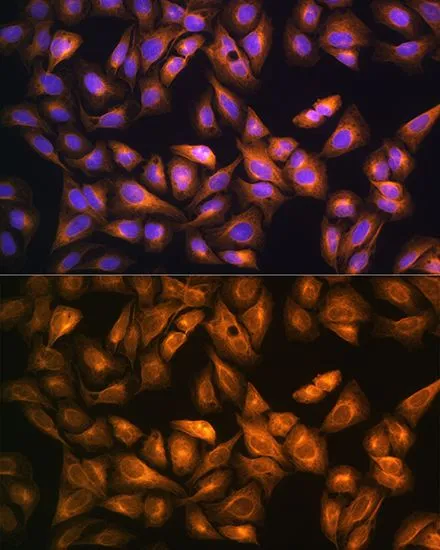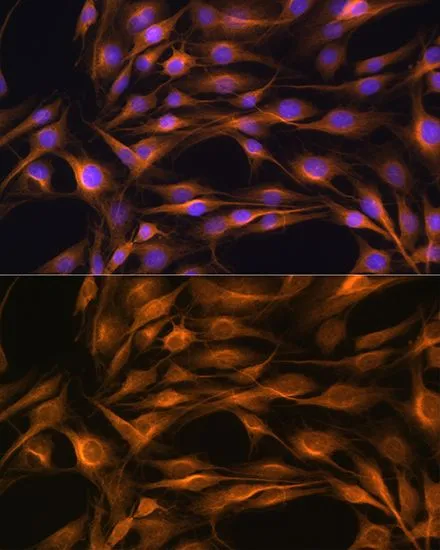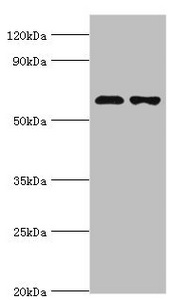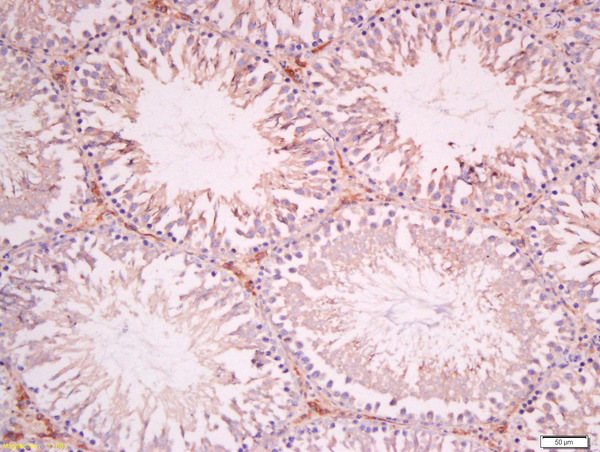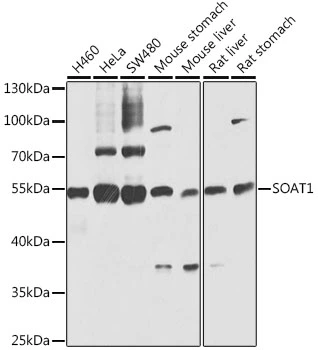
WB analysis of various sample lysates using GTX32890 SOAT1 antibody. Dilution : 1:1000 Loading : 25microg per lane
SOAT1 antibody
GTX32890
ApplicationsImmunoFluorescence, Western Blot, ImmunoCytoChemistry
Product group Antibodies
TargetSOAT1
Overview
- SupplierGeneTex
- Product NameSOAT1 antibody
- Delivery Days Customer9
- Application Supplier NoteWB: 1:500 - 1:2000. ICC/IF: 1:50 - 1:200. *Optimal dilutions/concentrations should be determined by the researcher.Not tested in other applications.
- ApplicationsImmunoFluorescence, Western Blot, ImmunoCytoChemistry
- CertificationResearch Use Only
- ClonalityPolyclonal
- ConjugateUnconjugated
- Gene ID6646
- Target nameSOAT1
- Target descriptionsterol O-acyltransferase 1
- Target synonymsACACT, ACAT, ACAT-1, ACAT1, SOAT, STAT, sterol O-acyltransferase 1, acyl-coenzyme A:cholesterol acyltransferase 1, sterol O-acyltransferase (acyl-Coenzyme A: cholesterol acyltransferase) 1
- HostRabbit
- IsotypeIgG
- Protein IDP35610
- Protein NameSterol O-acyltransferase 1
- Scientific DescriptionThe protein encoded by this gene belongs to the acyltransferase family. It is located in the endoplasmic reticulum, and catalyzes the formation of fatty acid-cholesterol esters. This gene has been implicated in the formation of beta-amyloid and atherosclerotic plaques by controlling the equilibrium between free cholesterol and cytoplasmic cholesteryl esters. Alternatively spliced transcript variants have been found for this gene. [provided by RefSeq, Nov 2011]
- Storage Instruction-20°C or -80°C,2°C to 8°C
- UNSPSC12352203
References
- SEL1L-HRD1 endoplasmic reticulum-associated degradation controls STING-mediated innate immunity by limiting the size of the activable STING pool.Read more

